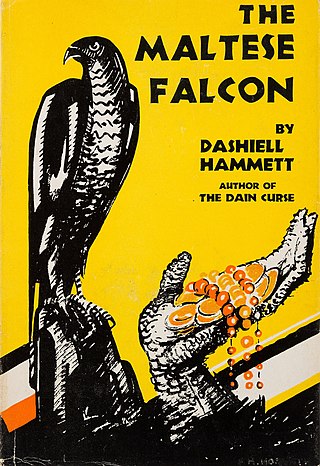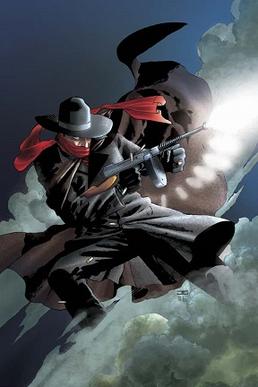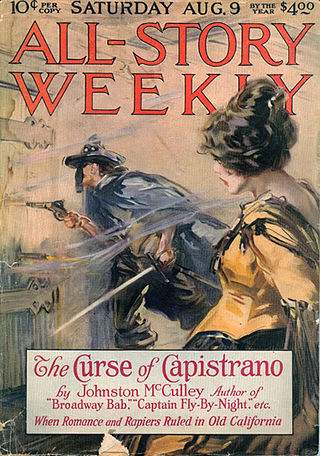Films

- Women Are Trouble (1936)
- Here's Flash Casey (1938)
| Casey, Crime Photographer | |
|---|---|
| Created by | George Harmon Coxe |
| Original work | Return Engagement, March 1934, Black Mask |
| Print publications | |
| Book(s) | Books Cox, J. Randolph [2005], Flashgun Casey, Crime Photographer: From the Pulps to Radio And Beyond, David S. Siegel, William F. Nolan, Yorktown Heights, NY: Book Hunter Press. ISBN 1-891379-05-4 Coxe, George Harmon [1946], Flash Casey, Detective, J. Meyers : E.B. Williams :Avon Book Co. [1] |
| Novel(s) | Novels Silent Are the Dead (1942) Murder For Two (1943) Error of Judgement (1961) The Man Who Died Too Soon (1962) Deadly Image (1964) |
| Comics | Casey: Crime Photographer, Aug 1949, Marvel Comics Radio Tie in |
| Magazine(s) | Black Mask |
| Films and television | |
| Film(s) | Women Are Trouble (1936) Here's Flash Casey (1938) |
| Television series | Crime Photographer (1951 - 1952) |
| Theatrical presentations | |
| Play(s) | Bristol, Stephen Crime Photographer [2] |
| Audio | |
| Radio program(s) | Casey, Crime Photographer (July 7, 1943 – November 16, 1950 and January 13, 1954 – April 22, 1955) |
Casey, Crime Photographer (also known as Crime photographer; Flashgun Casey; Casey, Press Photographer; Stephen Bristol, Crime Photographer) was an American media franchise that lasted from the 1930s until the 1960s. Created by crime writer George Harmon Coxe, the photographer Casey was featured in radio, film, theater, novels, magazines and comic books, [3] and television. Launched in a 1934 issue of the pulp magazine Black Mask, the character Jack "Flashgun" Casey, was a crime photographer for the newspaper The Morning Express. With the help of reporter Ann Williams (portrayed on radio and TV by Jan Miner), he solved crimes and recounted his stories to friends at The Blue Note, their favorite tavern. [4]
"Flashgun" Casey began in the March 1934 issue of Black Mask , in the story "Return Engagement". This story was later used in the film Here's Flash Casey. Twenty more stories appeared in the magazine over the next decades, and collections of these stories were published in anthology form as well. Two of the subsequent novels were serialized in the magazine, in addition to the 21 short stories. [5]
In 1941, three parts of the novel Silent are the Dead were published in Black Mask in September, October and November as Killers Are Camera Shy. In 1943, Murder for Two was serialized in January, February and March as Blood on the Lens.
Coxe wrote five novels featuring Casey.
Paul Ayres (Pseudonym of Edward S. Aaron) wrote a novel starring Casey, based on the works of Coxe

Begun as stories in Black Mask, the stories were brought to radio under multiple names. The series aired on CBS for its entirety. 07/07/43 - 11/16/50 and 01/13/54 - 04/22/55.
The radio show was sustained by the network, sponsored by Anchor Hocking, Toni home permanents, Toni Shampoo and Philip Morris. The Blue Note was a jazz club; the Archie Bleyer Orchestra and first Herman Chittison and later The Teddy Wilson Trio were featured, usually in the introduction and wrap up of the show.
Marvel Comics predecessor Timely Comics published four issues of a comic book tie-in to the radio show. The series began in August 1949 and ended in February 1950. [12] Art was provided by regular Timely artist Vernon Henkel. [13]

In 1951 the popular series moved to television
On Darren McGavin's website, he is quoted as saying "The cast of Crime Photographer didn’t go down fighting. "They took off for the hills. It was so bad that it was never re-run, and that’s saying something when you recall the caliber of television programs in those days." [14]

The Maltese Falcon is a 1930 detective novel by American writer Dashiell Hammett, originally serialized in the magazine Black Mask beginning with the September 1929 issue. The story is told entirely in external third-person narrative; there is no description whatsoever of any character's thoughts or feelings, only what they say and do, and how they look. The novel has been adapted several times for the cinema.

The Shadow is a fictional character created by American magazine publishers Street & Smith and writer Walter B. Gibson. Originally created to be a mysterious radio show narrator, and developed into a distinct literary character in 1931 by Gibson, The Shadow has been adapted into other forms of media, including American comic books, comic strips, serials, video games, and at least five feature films. The radio drama included episodes voiced by Orson Welles.

Samuel Dashiell Hammett was an American writer of hard-boiled detective novels and short stories. He was also a screenwriter and political activist. Among the characters he created are Sam Spade, Nick and Nora Charles, The Continental Op and the comic strip character Secret Agent X-9.
Michael Hammer is a fictional character created by the American author Mickey Spillane. Hammer debuted in the 1947 book I, the Jury. Hammer is a no-holds-barred private investigator whose love for his secretary Velda is outweighed only by his willingness to kill a killer. Hammer's best friend is Pat Chambers, Captain of NYPD Homicide. Hammer was a World War II army veteran who spent two years fighting jungle warfare in the Pacific Ocean theater of World War II against Japan.

Zorro is a fictional character created in 1919 by American pulp writer Johnston McCulley, appearing in works set in the Pueblo of Los Angeles in Alta California. He is typically portrayed as a dashing masked vigilante who defends the commoners and Indigenous peoples of California against corrupt, tyrannical officials and other villains. His signature all-black costume includes a cape, a hat known as a sombrero cordobés, and a mask covering the upper half of his face.

Black Mask was a pulp magazine first published in April 1920 by the journalist H. L. Mencken and the drama critic George Jean Nathan. It is most well-known today for launching the hardboiled crime subgenre of mystery fiction, publishing now-classic works by Dashiell Hammett, Raymond Chandler, Erle Stanley Gardner, Cornell Woolrich, Paul Cain, Carroll John Daly, and others.
The Green Hornet is a superhero created in 1936 by George W. Trendle and Fran Striker, with input from radio director James Jewell.
Publication of comic strips and comic books focusing on science fiction became increasingly common during the early 1930s in newspapers published in the United States. They have since spread to many countries around the world.

Kato is a fictional character from The Green Hornet franchise. This character has appeared with the Green Hornet in radio, film, television, book and comic book versions. Kato is the Green Hornet's crime-fighting sidekick, and Britt Reid's manservant in civilian life, and has been played by a number of actors. On radio, Kato was initially played by Raymond Hayashi, then Roland Parker who had the role for most of the run, and in the later years Mickey Tolan and Paul Carnegie. Keye Luke took the role in the movie serials, and in the television series, he was portrayed by Bruce Lee. Jay Chou played Kato in the 2011 Green Hornet film.
The Continental Op is a fictional character created by Dashiell Hammett. He is a private investigator employed as an operative of the Continental Detective Agency's San Francisco office. The stories are all told in the first person and his name is never given.
Ace Magazines was a comic book and pulp-magazine publishing company headed by Aaron A. Wyn and his wife Rose Wyn. The Wyns had been publishing pulp fiction under the Periodical House and A. A. Wyn's Magazine Publishers names since 1928, and published comics between 1940 and the end of 1956.
The Mask may refer to:
Carroll John Daly (1889–1958) was a writer of crime fiction. One of the earliest writers of hard-boiled fiction, he is best known for his detective character Race Williams, who appeared in a number of stories for Black Mask magazine in the 1920s.

Casey, Crime Photographer, known by a variety of titles on radio was a media franchise from the 1930s to the 1960s. The character was the creation of novelist George Harmon Coxe. Casey was featured in the pulp magazine, Black Mask, novels, comic books, radio, film, television and legitimate theatre.
George Harmon Coxe was an American writer of crime fiction. He created the series featuring crime scene photographer Jack "Flashgun" Casey, which became a popular radio show airing through to the 1940s.

The Green Hornet is an American action television series broadcast on ABC during the 1966–1967 television season, starring Van Williams as the Green Hornet/Britt Reid and Bruce Lee as Kato. It was produced and narrated by William Dozier, and filmed by 20th Century-Fox.
Raoul Whitfield was an American writer of adventure, aviation, and hardboiled crime fiction. During his writing career, from the mid-1920s to the mid-1930s, Whitfield published over 300 short stories and serials in pulp magazines, as well as nine books, including Green Ice (1930) and Death in a Bowl (1931). For his novels and contributions to the Black Mask, Whitfield is considered one of the original members of the hard-boiled school of American detective fiction and has been referred as "the Black Mask's forgotten man".

Casey, Crime Photographer is an American crime drama television series that aired from April 19, 1951, to June 5, 1952, on the CBS Television Network. The series ran for 57 episodes over two seasons. It was based on the successful radio series of the same name which was based on the novels by George Harmon Coxe.
Donald McClelland, who was also known as Donald C. McClelland in certain stage performances, was an American actor, stage performer and a former child actor.